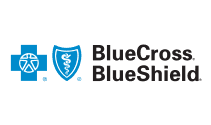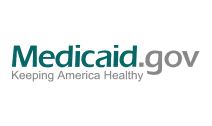FIBER
Why is fiber so important?
Fiber or roughage is the indigestible part of a plant that pushes through our digestive tract. There are two main types of dietary fiber: soluble and insoluble. Soluble fiber, such as bran, nuts, seeds and beans, holds water and turns to gel during digestion. Insoluble fiber, by contrast, speeds the passage of foods through the stomach.
You should aim for 25 grams of fiber per day.
Getting adequate fiber has many benefits:
- relieves constipation and other digestive trouble
- makes stool easier to pass, preventing constipation, hemorrhoids and diverticulitis (inflammation of the intestine), as well as helping some of the symptoms of irritable bowel syndrome (IBS), such as diarrhea, abdominal pain, and gas
- aids in weight management, since high-fiber foods take longer to chew, sending the signal to your body that you are full faster
- helps lower serum cholesterol levels, improving heart health
- better blood sugar control
If you need to increase your fiber intake, here are some great sources from real food:
- Fresh fruits (including skins when possible), such as apples, apricots, bananas, berries, grapes, grapefruit, oranges, peaches, pears, pineapple, and tangerines.
- Fresh vegetables, such as asparagus, bean sprouts, broccoli, brussel sprouts, cabbage, carrots, cauliflower, celery, corn, cucumber, green beans, leafy greens, okra, peppers, potatoes (with skin), squash, sweet potatoes, tomatoes.
- Dried fruits, such as apples, dates, figs, peaches, pears, and prunes.
- Dried beans, peas or lentils, such as black-eyed peas, black beans, garbanzo beans, kidney beans, lima beans, navy beans, pinto beans, split peas
- Whole grains, such as barley, bran, brown rice, buckwheat, bulgar, cornmeal, grits, graham, millet, oatmeal, oat bran, rye, whole wheat, wheat germ, wheat berries, cracked wheat, wild rice
- Whole grain crackers, such as AK mok, sesame crackers, graham crackers, Rye Krisp, Triscuits, Stoned Wheat crackers, Wheatsworth, whole wheat/bran matzos, oat bran crackers
- Other: bran muffins, granola bars, nuts, oatmeal cookies, popcorn, peanuts, seeds (sesame, sunflower, pumpkin), trail mix, whole wheat pasta
NOTE: increase fiber intake gradually, drink fluids liberally, avoid excessive amounts of fiber.
FOLATE
Folate, or Folic Acid, is a type of B Vitamin. It helps to:
- make DNA
- repair DNA
- produce red blood cells (RBCs)
If you don’t have enough folate in your diet, you may end up with a folate deficiency. Certain drinks and foods, such as citrus juices and dark green vegetables, are particularly good sources of folate. Not eating enough folate can lead to a deficiency in just a few weeks. Deficiency may also occur if you have a disease or genetic mutation that prevents your body from absorbing or converting folate to its usable form.
Folate deficiency can cause anemia. Anemia is a condition in which you have too few RBCs. Anemia can deprive your tissues of oxygen it needs because RBCs carry the oxygen. This may affect their function.
Folate is particularly important in women of childbearing age. A folate deficiency during pregnancy can lead to birth defects. Most people get enough folate from food. Many foods now have additional folate to prevent deficiency. Nevertheless, supplements are recommended for women who may become pregnant. For more information on this, check out Oh, Baby! Prenatal Vitamins
Here are some great ways to get folate from food:
- Fortified Breakfast Cereal
- Black-eyes peas
- Orange juice
- Asparagus
- Greens (collard, turnip, kale, mustard)
- Pineapple juice
- Liver, organ meats
- Brussel sprout
- Avocado
- Cauliflower
- Spinach
Vegetables should be eaten raw or cooked briefly in a small amount of water.
IRON
Low iron is the most common nutritional deficiency in the U.S. Almost 10% of women are iron deficient, according to figures from the Centers for Disease Control and Prevention, but many people do not know what a vital nutrient it is.
Iron transports oxygen through your body. Iron is an important component of hemoglobin, the substance in red blood cells that carries oxygen from your lungs to transport it throughout your body. Hemoglobin represents about two-thirds of the body’s iron.
That’s one reason why, if you are low in iron, you may feel exhausted or fatigue easily with moderate exertion. You may also have decreased brain function and an impaired immune system.
Iron is also important for healthy cells, skin, hair, and nails.
Young women, ages 9 to 13 need about 8 grams of iron. Starting in adolescence, a woman’s iron needs increase due to losing blood each menstrual cycle. Women through about age 50 need 18 grams of iron daily.
Here are some great ways to get iron through food. If this is not adequate, talk to you provider about adding an iron supplement.
- Liver and other organ meats
- Clams, oysters, sardines
- Beef and pork
- Pork and beans
- Chili con carne
- Spinach
- Blackstrap molasses
- Raisins, dried apricots/figs/prunes
- Prune juice
- Dried peas, beans
- Fortified breakfast cereals (check your labels!)
PROTEIN
Protein is used by the body for building and preparing cells, muscles, and tissues, and for energy. There is some debate over how much protein a person should have every day, so you may need to experiment to find what works best for your body. The Recommended Daily Allowance (RDA) is about 10% of your daily calories. This is a minimum. Many people suggest at least 20% of daily calories or 1.6-2 grams per kilogram of body weight should come from protein.
Protein is found mostly in foods which come from animals, but some plant foods also have protein.
Foods which are high in protein are:
- Milk Products:
- milk
- yogurt
- all types of cheese, including cottage cheese
- Animal Sources:
- poultry – chicken, turkey, duck, goose, pheasant, etc.
- fish
- beef
- pork and ham
- veal
- lamb
- eggs
- Plant Sources:
- beans and peas: canned or dry including lentils, navy beans, kidney beans, garbanzo beans, pinto beans, lima beans, soybeans
- nuts and nut butter, such as peanut, walnut, almonds, cashews, etc.


















